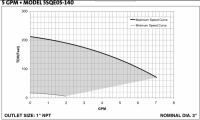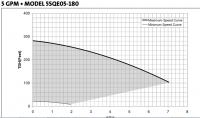I have a low yielding well (3 gpm) with 6 inch PVC casing. We have a seasonal fluctuation of about 15 feet in our static water level. The pump setting depth and water level measurements tell me that the amount of reserve water in the casing will be about 50 gallons during our dry season (fall/winter) and about 78 gallons during spring/summer.
When looking at the criteria for pump selection should I use the low-50 gal basis for calculating which pump to get?
When looking at the criteria for pump selection should I use the low-50 gal basis for calculating which pump to get?


